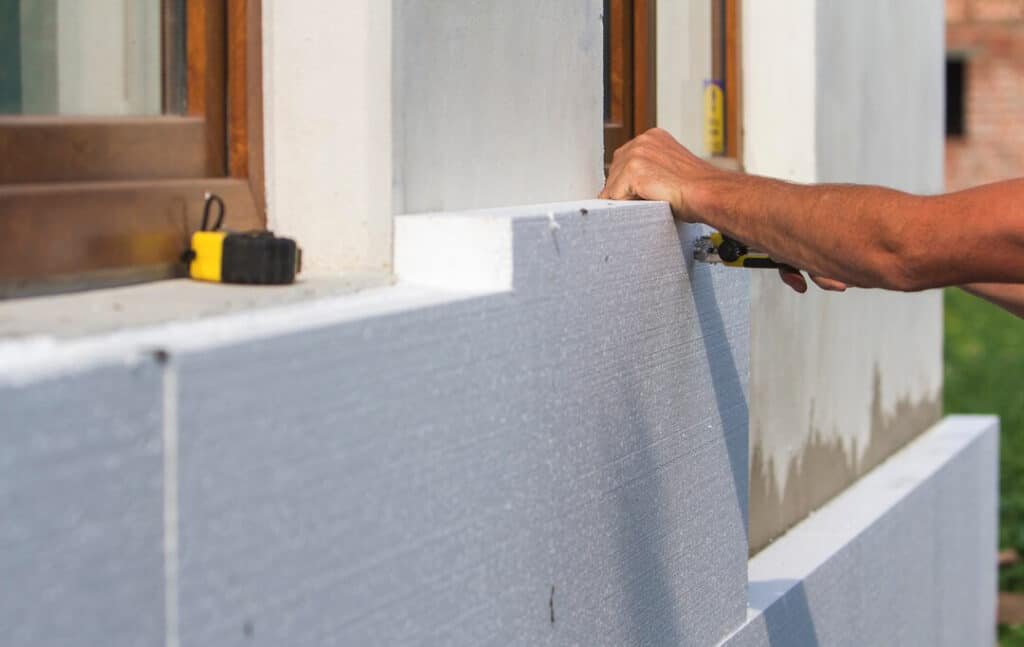
Thermal insulation is one of the most important factors in improving the energy efficiency of a building, maintaining a constant temperature and reducing heating and cooling costs. Among the many materials used for thermal insulation, styrofoam —or scientifically expanded polystyrene (EPS)— stands out for its cost-effectiveness, ease of application and insulating properties. In this article, we will see how styrofoam can be used for insulation, what its advantages and disadvantages are and in which cases its use is appropriate.
What is Styrofoam?
Styrofoam is a thermal insulation material derived from petroleum and created by expanding polystyrene granules with the help of steam and pressure. It is lightweight, durable, and has the ability to trap air in microcells, which makes it an excellent insulating material. It is available in various forms, mainly in sheets or plates of different thicknesses.
Using Styrofoam for internal thermal insulation
Internal thermal insulation is a solution that is mainly applied when it is not possible or advantageous to insulate the outside of a building — for example, in apartment buildings where changes to the exterior are prohibited or when it comes to listed buildings. Styrofoam can be placed on the interior walls, the ceiling or even the floor.
The most common application method is to stick polystyrene sheets to the wall with adhesives – plasters and then cover them with drywall or plaster. Polystyrene can also be used for thermal insulation of suspended ceilings or even for thermal insulation of interior partitions.
Advantages
- Low cost: Styrofoam is one of the most affordable materials on the market, making it ideal for cases with a limited budget.
- Good thermal insulation: Despite its low weight and cost, it offers satisfactory thermal insulation capacity.
- Easy to apply: It is lightweight and can be easily cut into any shape, which makes installation particularly easy.
- Durability: Although lightweight, it is resistant to compression and moisture (to a limited extent).
Disadvantages
- Reduced sound insulation: Styrofoam does not offer significant protection against noise, which can be negative in apartment buildings or apartments.
- Flammability: Although self-extinguishing forms are now available, the basic form of Styrofoam can be flammable.
- Loss of space: The addition of Styrofoam and surface coating reduces the net usable interior space, especially in small rooms.
Suitable application cases
Styrofoam for interior insulation is suitable for:
- Rental apartments where no intervention is allowed on the external wall.
- Preservable or historic buildings.
- Faster and more economical thermal insulation solutions.
- Internal thermal insulation of local scope (e.g. in a single space).
Conclusion
The use of polystyrene for internal insulation is a practical and economical solution, especially when external thermal insulation is not feasible. Although it does not offer all the advantages of more modern or specialized materials, it can provide significant energy savings and comfort in a space. With the correct application and combination with other materials (such as soundproofing panels or plasterboard), polystyrene can be a reliable option for improving the energy efficiency of an interior space.
For effective thermal insulation and protection, styrofoam is a reliable solution, especially when combined with other specialized insulation materials, such as rock wool or waterproofing materials, depending on the needs of the construction. For applications that also require aesthetic cladding, Etalbond panels offer a modern look with durability over time.
Learn everything about insulation materials from MAVROMMATIS, every week new designs, new innovative products
You can also find everything about plexiglass from MAVROMMATIS, from acrylic sheets to polycarbonate panels for decoration and waterproofing, all with top quality and a wide variety!










